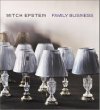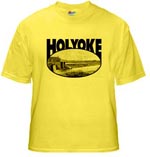by Laurel | April 27th, 2012
16 March 1933
States Gun Fires At Close Range in Walence Murder
State Police Ballistic Expert, Capt. C. A. Van Amburgh, Testifies in Woman’s Trial
Slayer Stood Between Two Beds
Firearm Discharged No More Than 12 Inches From Holyoke Man–Mrs. Walence is Disturbed
Bullets which killed Paul J. Walence, 44, of 71 Linden Street, Holyoke, while he lay in bed the night of July 11, 1932, were fired by a person standing between Walence’s bed and that of his wife, and came from the .25 caliber automatic found later outside the Walence home. This was the testimony given by Capt Charles A. Amsburgh, state police ballistic expert, when he was called to the stand by the commonwealth in the trial of Mrs. Mary (Szerbink) Walence, charged with the murder of her husband. The case is being tried before Judge Daniel T. O’Connell and a jury in superior court and the fourth day was completed yesterday.
The gun was fired at a distance not greater than 12 inches from the victim, Capt. Van Amburgh declared in answer to a question by District Attorney Thomas F. Moriarty. The witness declared that it would have been impossible for the gun to have been fired at a greater distance, because had it been, there would not have have been such distinct powder residue on the pajama coat Walence was wearing. Had the gun been fired at a distance greater than 12 inches the flakes of unburned power which Capt. Van Amburgh found on the pajama coat would not have been there, he testified. All the shots were fired from above and at an angle of about 45 degrees, he said.
From the location of five shells — four of which were found under beds in the room — as testified to by other witnesses, Capt. C. Amburgh declared it his belief that the gun used in the shooting must have been fired within the room. This merely substantiated his previous opinion based on the power residue and particles which he found on the sleeping garment he said.
When District Attorney Moriarty started to question the captain about the bullets, the chief counsel for the defense, Attorney Thomas C. Maher, announced that such questioning would not be necessary as it was agreed the bullets had been fired from the gun found later in the yard.
Mrs. Walence Breaks Down
Mrs. Walence’s rigid composure broke for the first time yesterday afternoon when Harold E. Whitcher, Springfield chemist, was being cross examined by Attorney Maher concerning the chemical analysis he had made of threads taken from the vicinity of the holes in the pajama coat. Just before this the district attorney had held the blood-stained garment up for identification by Whitcher. At the sight of it, Mrs. Walence, the first woman to be tried for murder in this county in 13 years, shuddered. A moment later she began to weep and was shaking with sobs while the chemist was being cross examined.
Judge O’Connell declared a recess and she was escorted by the police matron and a deputy sheriff from the crowded courtroom. After a few minutes she was brought back and the jury recalled. Capt. Van Armburgh was then placed on the stand. When the blood-stained pajama coat was shown to him for purposed of identification, Mrs. Walence again started weeping, but soon regained control of herself and sat, white-faced and tight lipped, while the state police officer gave his testimony.
Once before in the afternoon a recess had been declared by Judge O’Connell to allow another women interested in the case to regain her composure. This earlier recess came when miss Mary Kostek, 25, of Hatfield, the “mystery woman” of the case, was forced to identify Mrs. Walence.
Miss Kostek was asked by the district attorney if she had seen Mrs. Walence since the day in July of 1931 when she met her at the House of Providence at Holyoke. Miss Kostek replied in a low voice that she did not want to see Mrs. Walence. Judge O’Connell cautioned her that although the question might embarrass her, she would have to answer. District Attorney Moriarty then asked if she saw the woman in court. Finally Miss Kostek looked at the defendant and broke into a fit of weeping, whereupon Judge O’Connell recessed court to allow her to recover.
Miss Kostek, an attractive young woman who was dressed in somber colors, wearing a black hat and veil, took the stand early in the afternoon. She testified that she lives at Hatfield but is employed in housework at Holyoke. She declared that she knew Paul Walence for about 2 ½ years and that when she first met him she was 22. She said she did not know at first that he was married but that when she learned he had a wife she tried to break away from him.
Continued Under Threats
She told of her inability to do this because of his insistence that they continue to keep company, and of his threats to kill her and kill himself should she refuse to continue going with him. These threats so terrified her, she said, that she acceded to his requests and continued to see him. She admitted having gone to his place of business. There was drinking there, she stated, and girls frequented the place. She used to see him twice a week, she declared.
On July 6, 1931, Miss Kostek visited Walence in the House of Providence Hospital at Holyoke, she testified. While there, Mrs. Walence came in and asked her who she was. Walence declared that Miss Kostek was a nurse but Mrs. Walence shouted she was not a nurse and, grabbing her, tore her dress to pieces, the witness said. Asked what Mrs. Walence said to her on that occasion, the witness replied that she preferred not to repeat the remarks.
Miss Kostek’s brother, Stanley, was the next witness to take the stand. He testified that Mrs. Walence visited him and warned him to keep his “wife” away from her husband. It was then that Mrs. Walence learned for the first time that the “other woman” was Kostek’s sister, for Kostek is not married.
When court opened yesterday morning at 10, Capt. Peter A. Cullen of the Holyoke police was placed on the stand for a resumption of the cross examination, which was started Tuesday. He partly identified Miss Kostek, although he said he could not remember her last name. Other witnesses to testify yesterday included Dr. P. J. Moriarty, medical examiner, who explained that the brown marks on the pajama coat were powder marks, and Wilbur Boyer, of 452 Appleton Street, Holyoke, who told of being on Suffolk Street in the vicinity of Linden Street the night of the shooting and of hearing five shots, two, then a brief period of silence and then three more in rapid succession.
William C. Mengel of 159 West Street, Holyoke, a garage man and a close friend of three years’ standing of Paul Walence, testified after Stanley Kostek had been on the stand. He said that he and his father had called on Paul Walence the night of July 10, 1932, and that they left about 10 that night after a half-hour’s visit.
Mr. Whitcher, a chemist told of examining the pajama coat and of finding evidence of powder residue around the holes in the garment. He made the chemical analysis in the presence of Capt. Van Amburgh, he said. Asked what he meant by “powder residue,” he explained that it was powder “partly or wholly burned.” “It comes from burning powder,” he added.
J.J. Granfield Aids
Aiding District Attorney Moriarty on behalf of the commonwealth is Assistant District Attorney John J. Granfield. Representing the defendant are Attorneys Thomas G. Maher and Gregory Scanlon of Holyoke and Attorney Stanley F. Closek.
At 8 yesterday morning a line of spectators for the trial gathered at the courthouse, two hours before court convened, and by the time court opened at 10 there were about 500 persons waiting to occupy the 60 seats in the courtroom. According to officials at the courthouse the trial is drawing more public attention than any case in years.. When the noon recess was declared at 1 in the afternoon the courtroom was cleared of all spectators, with a result that most of those who sat in at the morning session failed to get seats for the afternoon. Promptly at 2, when court convened, the doors were closed leaving a large number of the hopeful standing in the corridor outside the guarded door of the courtroom. A few of the gained entrance a little after 3 when the regular afternoon recess was declared and some of the spectators within the room left.
Adapted from The Springfield Republican.
Previously published articles about this case:
- Part I: Police to Charge Wife With Killing of Holyoke Man
- Part II: Probable Cause Found in Murder Trial at Holyoke
- Part III: Thousands Gather at Walence Rites
- Part IV: Indictment Given to Court By Grand Jury
- Part V: Executors Appointed, Source of Gun Held Accountable
- Part VI: Judge Appointed, Jury Selected
- Part VII: Testimony Begins at Holyoke Today
- Part VIII: Marital Relations of the Walences








